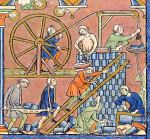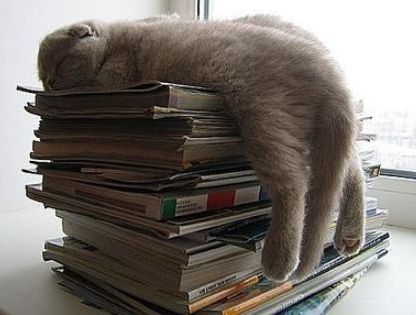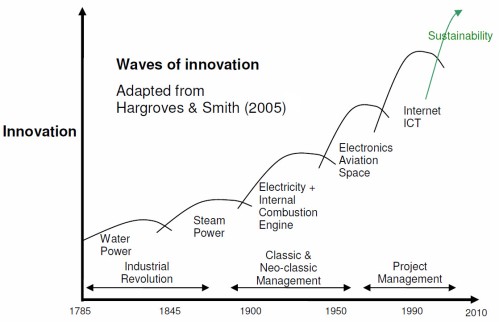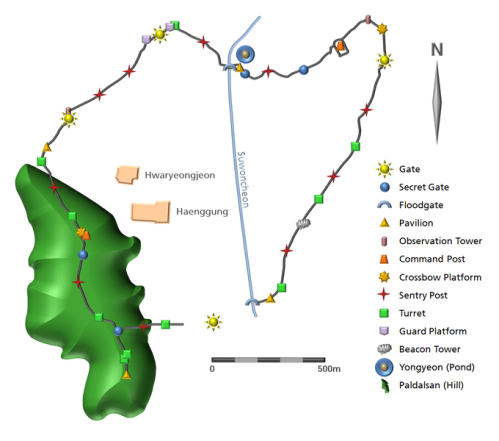 One of the most overlooked aspects of creativity and learning is simply taking the time needed to reflect and think. Professor Manfred Kets De Vries suggests that the fast paced, continuous access, instant response culture we operate in is eroding people’s ability to reflect and create innovative solutions to problems. The pressure to ‘just finish this’ or ‘find out about (and hit Google on your smart phone)’ is usually too great to resist. But working quicker and harder is not necessarily working smarter.
One of the most overlooked aspects of creativity and learning is simply taking the time needed to reflect and think. Professor Manfred Kets De Vries suggests that the fast paced, continuous access, instant response culture we operate in is eroding people’s ability to reflect and create innovative solutions to problems. The pressure to ‘just finish this’ or ‘find out about (and hit Google on your smart phone)’ is usually too great to resist. But working quicker and harder is not necessarily working smarter.
De Vries believes that deliberately slowing down and setting aside regular periods of ‘constructively doing nothing’ may be the best thing you can do to induce a state of mind that nurtures imagination, creativity, and improves your mental well-being, by giving ideas time to mature.
“Learning without reflection is a waste, reflection without learning is dangerous” – Confucius
Business may be all pervasive, almost everyone seems glued to their PDA and feels compelled to respond to virtually every email received instantaneously but being busy and being effective are not the same thing unless you work in a customer service or support role!
If you are in a management, problem solving, or creative role a significant part of your job is developing new ideas or concepts that have been though through and optimised. This requires thinking time. But is creatively doing nothing really acceptable? Most of us feel guilty if we don’t have something to do, and we get a buzz when we feel really busy. And these busy behaviours generate their own reward by stimulating the brain to shoot dopamine into the bloodstream giving us a rush that can make stopping being busy so much harder. It really is nice to feel wanted, busy and in demand.
The problem with being busy is that if you don’t allow yourself periods of uninterrupted, freely associated, thought then personal growth, insight and creativity are less likely to emerge. And taking the time to ‘smell the daisies’ has multiple benefits……
The world of multitasking and hyperactivity helps us to delude ourselves that we are productive. The reality is that social media is reactive and not very original. It contracts creativity and can impact mental health. If we don’t know how to calibrate the balance between action and reflection we may become a casualty of information overload and psychological burnout.
Similarly, in many contemporary organisations work addicts are encouraged and rewarded; the behaviour is superficially useful to the organisation. Unfortunately, a workaholic environment can contribute to serious personal and mental health problems including low morale, depression, and above average absenteeism. The most effective knowledge workers are those who can both act and reflect, which means unplugging themselves from the compulsion to keep busy.
Deliberately doing nothing creates valuable opportunities for unconscious thought processes. Unconscious thought excels at integrating and associating information; we are less constrained by conventional associations and more likely to generate novel ideas. As well as being good for our mental health, doing nothing may turn out to be the best way to resolve complex problems. Italian painter Giorgio Vasari summed it up well when he said “Men of genius sometimes accomplish most when they work least”.
Some of the ways you can create time for reflection include:
- Maintaining your relationships. We all need meaningful contact with people to feel fully alive. Maintaining our relationships needs interaction, engagement and time out from work. Conversation is also a powerful stimulant for creativity (just make sure you have a notebook handy).
- Saying No. Being able to say no is a key skill. Simply saying no to unimportant requests can free up time for more important things (see more on personal time management).
- Managing your sleep habits. In a perfect world we should all sleep around eight hours a night. Good sleep is essential for personal growth and creativity.
The challenge with taking time out to be creative is the good ideas always come ‘from nowhere’, usually at the most inappropriate moments (eg, in the shower). If this happens to you, you are not alone; from Archimedes in his bath, to Newton in his Lincolnshire garden (but no ‘apple’), brilliant ideas just seem to just appear. So the final element in creatively doing nothing is being able to trap your ideas when they surface.
 In summary, a walk around outside or time spent with your feet on the desk can be more productive than working through a lunch-break – now all you have to do is convince the boss.
In summary, a walk around outside or time spent with your feet on the desk can be more productive than working through a lunch-break – now all you have to do is convince the boss.
For a different take on productive laziness see: http://www.thelazyprojectmanager.com/














